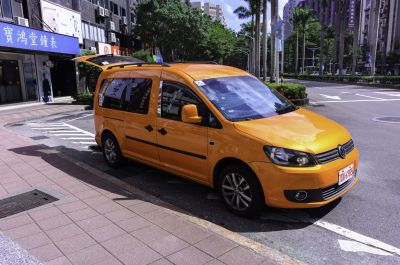 2007 Volkswagen Caddy Maxi III Dimensions, Size & Specs
2007 Volkswagen Caddy Maxi III Dimensions, Size & SpecsMeasurements of the 2007 Volkswagen Caddy Maxi III, engineered for optimal performance and comfort
| Dimensions | |
|---|---|
| Length: | 4875 mm191.9 in16.0 ft |
| Width: | 1794 mm70.6 in5.9 ft |
| Width (Opened Mirrors): | 2062 mm81.2 in6.8 ft |
| Height: | 1834 mm72.2 in6.0 ft |
| Ground Clearance: | 140-173 mm5.5-6.8 in0.5-0.6 ft |
| Trunk Capacity: | 530 liter18.7 cu ft |
| Trunk Capacity (Max): | 3950 liter139.5 cu ft |
| Weight Specifications | |
| Curb Weight: | 1558-1751 kg3435-3860 lbs |
| Maximal permitted Weight: | 2264-2375 kg4991-5236 lbs |
| Roof Load: | 100-164 kg220-362 lbs |
| Tire Specifications | |
| Rims Sizes: | 16-inch rims:
|
| Tire Size: |
|
The Volkswagen Caddy Maxi III, produced between 2007 and 2010, is a spacious and versatile minivan designed to meet both passenger and cargo transportation needs. Measuring 4875 mm (191.9 inches) in length, 1794 mm (70.6 inches) in width, and standing 1834 mm (72.2 inches) tall, the Caddy Maxi III offers generous interior space tailored for comfort and utility. When considering operational practicality, the vehicle's width expands to 2062 mm (81.1 inches) with the mirrors opened, which is essential for fitting through narrow passages or parking.
The vehicle’s curb weight ranges from 1558 to 1751 kg (3435 to 3860 lbs), depending on trim and configuration, while the maximum weight capacity varies between 2264 and 2375 kg (4990 to 5238 lbs). This robust weight framework ensures a durable build capable of handling substantial loads without sacrificing driving stability. The ride height or ground clearance varies from 140 mm to 173 mm (5.5 to 6.8 inches), offering sufficient clearance for light off-road excursions or uneven urban surfaces.
One of the Caddy Maxi III’s standout features is its impressive luggage capacity. With rear seats in place, the vehicle offers 530 liters (18.7 cubic feet) of cargo volume, which expands dramatically to 3950 liters (139.5 cubic feet) when the seats are folded, making it an outstanding option for both families and commercial users needing flexible storage solutions. The vehicle supports roof loads ranging from 100 to 164 kg (220 to 361 lbs), further extending its cargo-carrying versatility.
The Caddy Maxi III rides on 16-inch rims (16,6J x 16) fitted with 205/55 R16 tires, balancing ride comfort and handling precision for various driving conditions. Overall, the Volkswagen Caddy Maxi III is a well-rounded minivan delivering ample space, adaptable cargo volume, and practical dimensions suited for a mixture of urban travel and light utility tasks.
Discover the standout features that make the 2007 Volkswagen Caddy Maxi III a leader in its class
Have a question? Please check our knowledgebase first.
The Volkswagen Caddy Maxi III produced from 2007 to 2010 features a length of 4875 mm (191.9 inches), a width of 1794 mm (70.6 inches) excluding mirrors, and 2062 mm (81.1 inches) with mirrors opened. Its height stands at 1834 mm (72.2 inches). The vehicle’s curb weight ranges between 1558 kg (3435 lbs) and 1751 kg (3860 lbs) depending on trim and configuration. These dimensions position it as a spacious minivan ideal for both cargo and passenger transport, offering a good balance of compactness and interior capacity.
The Volkswagen Caddy Maxi III offers a generous luggage capacity of 530 liters (18.7 cubic feet) with all seats in position, making it suitable for everyday cargo and luggage needs. When the rear seats are folded down, the luggage capacity expands dramatically to 3950 liters (139.5 cubic feet), accommodating large items and making it highly versatile for commercial or family use. This flexible cargo space is one of the vehicle’s highlights, blending passenger comfort with practical storage capabilities, perfect for transporting bulky goods or equipment.
The width of the Volkswagen Caddy Maxi III with mirrors opened is 2062 mm (81.1 inches). This measurement is important because it reflects the space the vehicle truly occupies on the road, especially in tight urban environments or narrow parking spaces. Knowing this full width is critical for maneuvering, parking, and understanding clearance in garages or narrow streets. While the car’s body width is 1794 mm (70.6 inches), the mirrors add a significant span, affecting overall handling and spatial awareness in daily driving.
The ride height or ground clearance of the Volkswagen Caddy Maxi III ranges from 140 mm (5.5 inches) to 173 mm (6.8 inches), depending on the vehicle's setup. This ground clearance level provides a balanced approach, suitable for city driving with occasional light off-road or uneven surface capability. It helps protect the underbody from damage on rough roads while maintaining stability and ease of entry. This clearance is typical for minivans, ensuring both comfort and sufficient capability for varied driving conditions.
Compared to its predecessor, the Volkswagen Caddy Maxi III (2007-2010) shows noticeable dimensional growth primarily in length, extending its size to 4875 mm (191.9 inches). This increase translates to more interior space and enhanced cargo capacity. Width and height have also been optimized, with the width at 1794 mm (70.6 inches) and height at 1834 mm (72.2 inches), offering a more comfortable cabin space without sacrificing maneuverability. Overall, the newer generation improved practicality and usability, better accommodating passengers and loads relative to the earlier model.
When compared with similar minivans in its class, the Volkswagen Caddy Maxi III holds a competitive stance, particularly due to its extended length of 4875 mm (191.9 inches) and flexible interior space. Its luggage capacity up to 3950 liters (139.5 cubic feet) with folded seats is substantial, often exceeding or matching that of rivals in segments like the Ford Transit Connect or Renault Kangoo Maxi. The vehicle’s width (1794 mm or 70.6 inches) and height (1834 mm or 72.2 inches) provide a roomy interior while maintaining manageable exterior dimensions for urban environments. Its high roof load capacity (100-164 kg) also makes it versatile for various loading needs.
The Volkswagen Caddy Maxi III, with a length of 4875 mm (191.9 inches), width of 1794 mm (70.6 inches) excluding mirrors, and height of 1834 mm (72.2 inches), can fit into many standard residential garages, but it may be a tight fit in some cases. Standard garages typically measure around 2400 to 2700 mm (94.5 to 106 inches) in width and at least 4800 mm (189 inches) in length. The vehicle’s width with mirrors opened (2062 mm or 81.1 inches) requires additional clearance, so folding or careful mirror adjustment might be necessary. Owners should verify their garage dimensions to ensure comfortable entry and exit.
The Volkswagen Caddy Maxi III has a maximum permissible weight (gross vehicle weight rating) ranging between 2264 kg (4990 lbs) and 2375 kg (5239 lbs), depending on the exact variant. This rating encompasses the vehicle's curb weight plus the weight of passengers, cargo, and optional equipment. The generous maximum weight capacity allows for flexible payloads, making it suitable for commercial uses such as goods delivery without compromising safety or performance. Users must adhere to these limits to maintain vehicle stability, braking performance, and durability.
The Volkswagen Caddy Maxi III is equipped with tire sizes of 205/55 R16 mounted on rims sized 16, 6J x 16. The 205/55 R16 tire profile strikes a balance between ride comfort, handling, and fuel efficiency, appropriate for a minivan of this size and weight category. The 16-inch rim diameter supports good stability and braking performance while contributing to an overall comfortable driving experience. Such tire and rim combinations are fairly common among vehicles in this segment, helping ensure road grip and durability under varied driving conditions.
The curb weight of the Volkswagen Caddy Maxi III ranges from 1558 kg (3435 lbs) to 1751 kg (3860 lbs), influenced by trim levels and options. This weight is moderate for a minivan of its size and helps balance comfort, stability, and performance. Heavier vehicles tend to consume more fuel, but VW’s engineering aimed to optimize fuel efficiency despite this. The weight also contributes to a stable and smooth ride, with lower susceptibility to crosswinds and road imperfections. Handling remains confident for urban and suburban driving, though the minivan’s weight means it's not as agile as smaller passenger cars.
Discover similar sized cars.

| Production: | 2015-2018 |
|---|---|
| Model Year: | 2015 |
| Length: | 4945 mm194.7 in |
| Width: | 1850 mm72.8 in |
| Height: | 1895 mm74.6 in |

| Production: | 2015-2019 |
|---|---|
| Model Year: | 2015 |
| Length: | 4878 mm192.0 in |
| Width: | 2065 mm81.3 in |
| Height: | 1836 mm72.3 in |

| Production: | 2010-2015 |
|---|---|
| Model Year: | 2010 |
| Length: | 4876 mm192.0 in |
| Width: | 2062 mm81.2 in |
| Height: | 1836 mm72.3 in |
